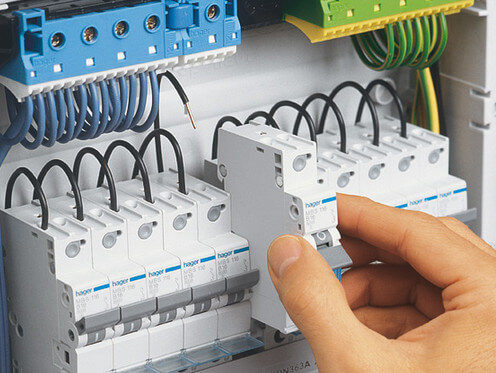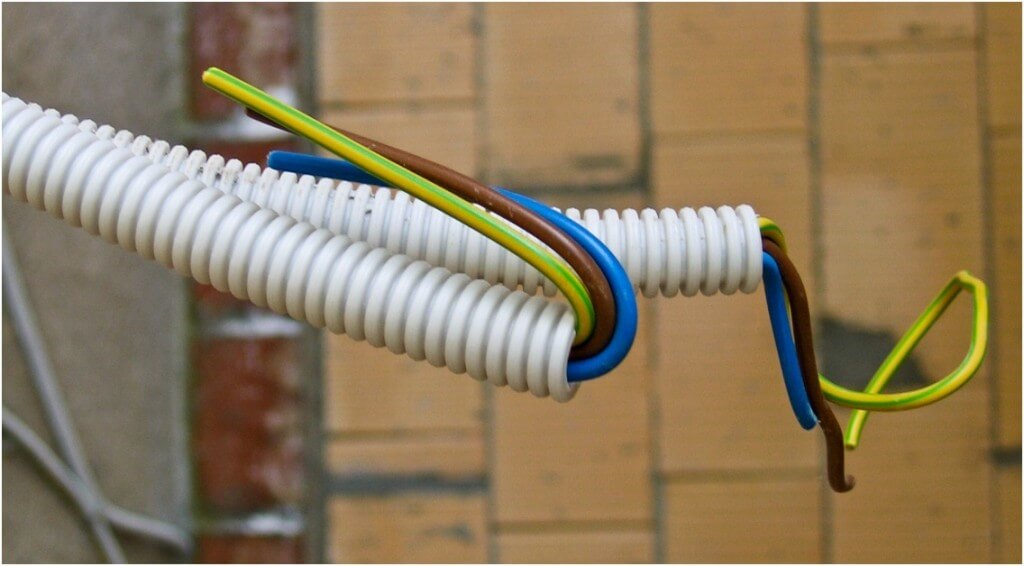How to conduct wiring in the bathroom?
Primary requirements
The basic requirements for electrical wiring in the bathroom are considered in GOST R 50571.7.701-2013 “Low-voltage electrical installations. Part 7-701: Requirements for special installations or locations. Premises for bathrooms and showers. " We also examined such issues in detail in the article - https://our.electricianexp.com/en/gde-i-kak-raspolozhit-rozetki-v-vannoj-komnate.html
What do you need to know? First of all, according to electrical safety, the bathroom or shower is divided into 4 zones, which are numbered from 0 to 3.
Wherein:
- 0 - the volume of the bathtub, shower tray, sink and other places where water is located.
- 1 - around zone 0. These are adjacent walls to the bathtub, sink, etc.
- 2 - is located at a distance of 60 cm from the edge of the bathroom, for containers of non-rectangular shape - in a radius (shower) 60 cm from the edges of zone 0.
- 3 - considered safe (conditionally).
In requirements PUE For bath there are such items:
7.1.40 - here we are talking about the fact that both open cable laying and hidden are permissible. But cable insulation must withstand at least 170 ° C.
7.1.47 - it says here about the possibility of installing equipment with various shells moisture protection classes by IPxx in zones from 0 to 3. The table is compiled according to the text for convenience.
| Zone | Security class | What can be used |
| 0 | IPX7 | electrical appliances with voltage up to 12 V, and the power source should be located outside this zone; |
| 1 | IPX5 | water heaters only |
| 2 | IPX4 (IPX5 for public spaces) | water heaters and luminaires of protection class 2 |
| 3 | IPX1 (IPX5 for public spaces) | All the rest |
* Installation of junction boxes, switchgears and control devices is not allowed in zones 0, 1 and 2.
7.1.48 - it describes the limitations and requirements for installing outlets in showers. In short, it is not allowed to install outlets in public showers, in showers and bathrooms, apartments can be installed in zone 3. Moreover, they must be connected either through isolation transformers, or the line must be protected RCD with a leakage current of not more than 30 mA, the same requirement is indicated in the aforementioned GOST R 50571 in paragraph 701.415.1. And all wiring accessories are installed at a distance of no closer than 0.6 m from the doorway of the shower.
Note: in PUE classification and zoning are given in accordance with GOST R 50571.11-96.In the current version of 2013, zone 3 is not described, apparently because it is already relatively safe. In the article, we mention it so that there are no disagreements with the PUE.
Requirements for switches, sockets and fixtures:
- If you want to make illumination of a shower cabin or a bathroom - you can use lamps with a voltage of 12V. This is the so-called protective measure against electric shock by an SELV or PELV (SNV - extra-low voltage, see paragraph 701.415.1 of the above GOST). In fact, if you use such lamps to illuminate other places in the bathroom, it will be better than using 220V.
- Sockets and switches must be rated IPx4 or IPx5. The number 5 means that the shell of the product does not allow water flows (jets) from any direction.
- The bathtub, sink, appliance housings, risers, and ground bus must be combined into potential equalization system.
- Feed the lines of "wet" rooms through a separate machine and RCD.
As for the method of installing electrical wiring in the bathroom, there are no clear restrictions on the rules of the PUE. You can use both external and hidden cable laying on the walls. The only caveat is when open wiring it is necessary to choose a cable of the corresponding marking so that it is intended for rooms with high humidity.
If all the requirements are met, then in the future you will not encounter any problems regarding electrical safety.
Installation instructions
Step 1 - Create a Scheme
First you need to decide on the wiring diagram in the bathroom. You should consider what electrical appliances will be installed, what type of lighting is selected, and no less important point - what kind of heating will be present.
Our recommendations are as follows:
- The electrical box, for electrical safety reasons, must be installed outside the room.
- Throughout the entire area, at least three outlets must be placed: for connecting a washing machine, for a hairdryer near a mirror and for an electric boiler or boiler (if one is present).
- The switch, by analogy with the box, is displayed in the next room, next to the front door.
- As we already said, automation is installed on each group of wires separately: sockets, lamps, powerful equipment.
- The electrical wiring in the bathroom is laid in the wall under the ceiling, parallel to the floor. To the outlets, the line drops perpendicularly, strictly down. If you decide to make a suspended or suspended ceiling, wires can be drawn through it (between profiles or under the film).
You should pay attention to the fact that all sockets and switches should be at a safe distance from the water source - at least 60 cm. Consider this fact so as not to endanger your life.
Having drawn the wiring diagram in the bathroom, you can proceed further - to the calculation of the amount of materials.
Step 2 - Choosing Accessories
At this stage, it is necessary not only to select the appropriate wiring elements, but also to determine their technical characteristics.
In order to make electrical wiring in the bathroom with your own hands, we recommend choosing the following materials:
- Three-core cable, copper, cross section 2.5 mm2 for sockets and 1.5mm2 - fixtures.If you have a powerful instantaneous water heater or electric boiler installed in the bathroom, then calculate the cable cross-section for it according to current and power. The best option would be to use a foreign cable NYM, however, the Russian analogue of VVGNG-LS will be a successful replacement in price and quality.
- Dowel clamps for cable mounts to the wall.
- Moisture-proof sockets and switches with IP degree of protection no less than “44” and splash-proof cover. Also, the products must necessarily have a grounding contact.
- Waterproof fixtures for the bathroom, if possible, it is better to use spotlights, because they are easier to install, look neat on the ceiling and can also work from 12 V.
- For potential equalization system power wire PV-3 1 * 6. To it, you additionally need to purchase tips.
Step 3 - Getting Started
So, for starters, according to the wiring diagram in the bathroom, you must independently create special grooves in the walls - gates, for laying the cable. Recesses also need to be done under sockets, switches junction box. To do this, you can use a drill with a special crown, with a diameter of 68 mm.
Next, the sockets and the box are installed in their seats and are securely fixed with a solution.
After that, you must fix the wiring in the gates yourself using the dowel clamps or the old-fashioned method - grab it with a solution every 20 cm. The ends of the cable are cleaned from insulation and threaded to the socket.
Now you can install the cores of sockets and switches in the seats. We draw your attention to the fact that it is better to fix the decorative cover after the entire repair so that it does not get dirty during the work.
When the wiring is fixed in the wall, you can go to installing circuit breaker and RCD do it yourself. Do not rush to connect them, as You will need to first check the correct wiring in the bathroom.
When the wiring in the room is over, you need to check the line for availability with a multimeter network short circuit. If it is missing, you did everything right and you can proceed to the decorative decoration of the walls.
There remains one equally important nuance, to which a serious approach should be ensured - it is necessary make a potential equalization system In bathroom. To do this, take our single-core copper wire and connect the casing of the washing machine, boiler, sink, bathtub and risers of cold and hot water. All these "points" must be connected to the ground bus installed in your input shield.
We draw your attention to the fact that if there is no grounding bus in the switchboard, be sure to replacement of electrical wiring in the apartment safe, with PE wire.
It should also be noted that for heating it is best to use electric underfloor heating, which you can easily lay in the floor on your own. That's the whole technology of electrical work. As you can see, you can do the wiring in the bathroom with your own hands, because device system is not supernatural!
We recommend that you look at visual video examples in which all stages of work are presented and how it all turned out:
Finally
Today, gypsum plasterboard ceilings as well as plastic panels are popular. If you decide to use them, then this will only facilitate electrical work. The fact is that when wiring the bathroom in the bathroom under a false ceiling, it will not be necessary to create gates, but simply lay the cable in a protective corrugated pipe, as shown in the photo. Corrugation, in turn, is easily attached with clips to the profile.

Another important point on which I would like to stop your attention is the lack of grounding in the apartment panel. Indeed, it happens that the land wire may be absent.In this case, you must replace wiring in the apartment to a new, three-core, after which it is imperative to make a potential equalization system.
That's all I wanted to tell you about how to make electrical wiring in the bathroom with your own hands. We hope that the information was useful to you and useful in electrical work!
Related Material:








